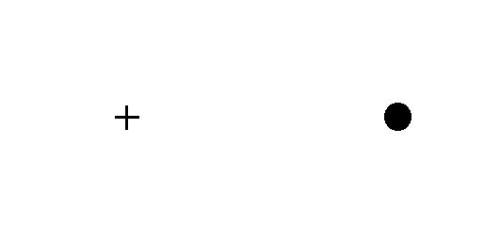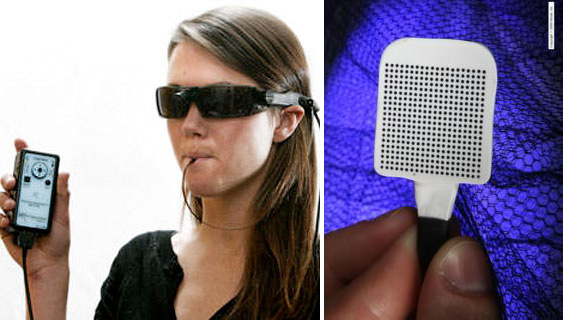When we think about our sense of sight, our minds naturally drift to one main area of interest – the eyes. Ever since you were a kid, you have been told that the eyes are the key to our ability to see.
As early as the 1960’s, scientists like Dr. Paul Bach-y-Rita have thought otherwise. The new pattern of thinking emphasizes that we actually see with our brains, not with our eyes. Our eyes are just the primary method of transmitting the stimulus to the brain for perception.
The brain’s role in vision can be demonstrated by looking at the “blind spot.”

To get an example of how your blind spot works, cover your left eye and keep your right eye focused on the plus sign above. Slowly move your face closer to or farther away from the monitor until the black dot disappears. The black dot disappears because it’s in your blind spot, a part of your vision where you have a lack of light-detecting cells and thus can’t “see.”
Blind spots aren’t terribly interesting in and of themselves. You probably knew you had them (we use the term “blind spot” quite often when driving). The more curious question is if we have blind spots, why don’t we suffer from gaping holes in our vision as we walk around?
Neuroscientist David Eagleman proposes two solutions in his book Incognito: The Secret Lives of the Brain:
One reason is because there are two eyes and the blind spots are in different, nonoverlapping locations; this means that with both eyes open you have full coverage of the scene. But more significantly, no one had noticed because the brain “fills in” the missing information from the blind spot. Notice what you see in the location of the dot when it’s in your blind spot. When the dot disappears, you do not perceive a hole of whiteness or blackness in its place; instead your brain invents a patch of the background pattern. Your brain, with no information from that particular spot in visual space, fills in with the patterns around it.
The concept of a “blind spot” helps to illustrate that your brain might have more to do with vision than we previously thought.
Dr. Bach-y-Rita began taking a closer look at vision and the brain’s role in the sense of sight. The result was a device that captured electrical impulses from a camera attached to someone’s forehead and translated those electrical impulses to vibrations that were converted to vibrations through receptors on the individual’s back.
At first, wearing the device while blindfolded and walking around a room would feel awkward. You would just feel random vibrations on your back. But, eventually, Dr. Bach-y-Rita found that participants could actually learn to perceive the vibrations and translate them into knowing how to navigate a room, even while blindfolded.
This represented a stunning discovery. Your brain could learn to navigate your surroundings without the help of your eyes. If that sounds shocking, perhaps it shouldn’t. After all, your eyes are just receivers for the plethora of information that then travels to your brain for processing. Eagleman continues:
To the brain, it doesn’t matter where those pulses come from – the eyes, the ears, or somewhere else entirely. As long as they consistently correlate with your own movements as you push, thump, and kick things, your brain can construct the direct perception we call vision.
In short, your brain can learn to understand the tiny vibrations on your back and help you navigate a room without bumping into tables and chairs.
This concept isn’t just useful when navigating the living room either. Eric Weihenmayer is using it to scale mountains as an extreme rock climber. In 2001, he became the only blind person to summit Mount Everest. Weihenmayer completes all of these feats with tiny electrodes attached to his tongue that receive electrical impulses from a camera similar to the scenario described above.

View of the BrainPort. Photo credit: Engadget
Outside of uncovering how our brain interprets electrical activity from the eyes, Incognito offered many other insights that can help us to understand why we think, act, and feel a certain way. I would highly recommend giving it a read.